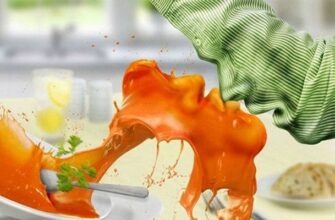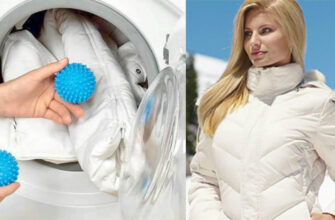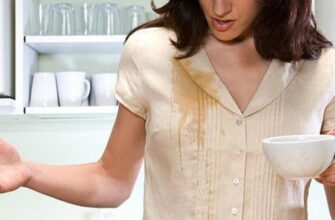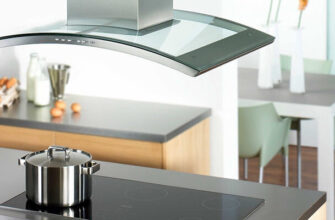The oven is an indispensable piece of household appliances for housewives who love to pamper their family or guests with pastries. But when it is used, oily deposits and carbon deposits are formed inside, which gives an unpleasant odor to the dishes and can shorten the service life of the equipment. We have found 9 effective ways to get rid of old fat and soot in the oven, have identified all their poles and cons. The advice of our experts will help to restore the cleanliness of the kitchen assistant, so that she will delight you with excellent cooking quality for a long time.
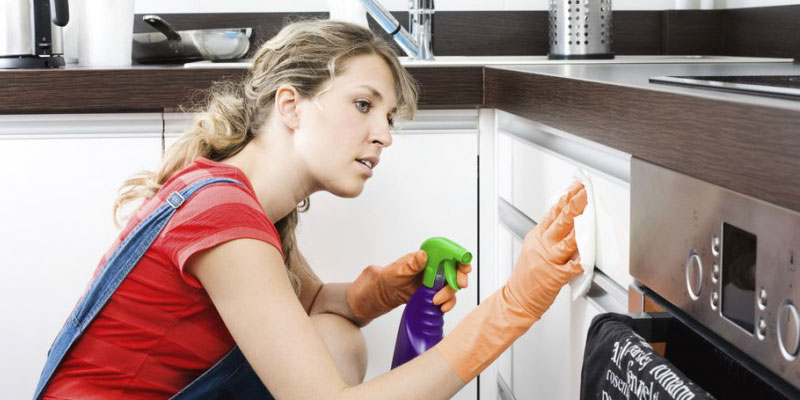
- Do I need to wash self-cleaning ovens
- Oven Care Tips
- How to remove old grease and carbon deposits
- Method 1. Household chemicals
- Method 2. Universal stone
- Method 3. Steam cleaning
- Method 4. Soda and vinegar
- Method 5. Baking dough
- Method 6. Citric acid
- Method 7. Ammonia
- Method 8. Cleansing paste
- Method 9. Detergent and steam
- Expert opinion
Do I need to wash self-cleaning ovens
Manufacturers of kitchen appliances care about the convenience and time saving of housewives, so ovens with self-cleaning functions are increasingly on sale:
-
catalytic, when a special inner coating prevents the formation of fatty deposits during cooking;
-
pyrolytic, when the oven needs to be put in a certain mode so that all impurities inside turn to ash.
-
The owners of such ovens are in luck – the oven itself will do half of the 'dirty' work for them. All that remains is to wipe the side surfaces, bottom and door with a damp cloth.
-
The catalytic enamel usually covers only the walls. The bottom and door must be washed by yourself. An oven without a self-cleaning function will have to be completely washed on your own.
Oven Care Tips
Every time you prepare food in the oven, the smallest drops of fat fall on the walls and door. If you wash them with dishwashing liquid or soap immediately after the oven has cooled down, then there will never be problems with carbon deposits and fatty deposits. Fresh dirt is washed off much easier than accumulated for a long time. After spending 5 minutes on daily care, you will not have to spend several hours removing old traces of grease and carbon deposits.
An excellent prevention of the formation of fatty deposits is the use of a baking sleeve or foil.
For those who neglect to regularly clean the inside of the oven, we offer several effective ways to remove stubborn grease and dark deposits.
How to remove old grease and carbon deposits
Old greasy traces and carbon deposits are difficult to wash off. Such a task is beyond the power of a conventional cleaning agent, especially since it is not recommended to use harsh abrasives for oven surfaces. To get rid of dirt inside the oven, you will have to use special household chemicals or use folk methods.
Before cleaning the oven, remove the trays and racks from it to ensure free access to all surfaces. It is easier to wash them separately.
In order for the cleaning process to take place faster, and the means to work more efficiently, the oven should first be heated to a temperature of 50-600C.
Method 1. Household chemicals
You can buy a special cleaner in stores to clean stubborn dirt from stoves, microwave ovens, grills and ovens. As an active component, they use alkali, which easily breaks down molecules of fat, soot, carbon deposits from any surfaces.
Our experts have studied the range of gels and powders offered in supermarkets and online stores, tested their effectiveness. From all the variety, we have selected the 5 best products in different price ranges:
-
Gel Antifat Sanitary formula. The average price is 55 rubles for 200 ml.
-
Concentrated gel Amvey Over Cleaner 500 ml. Price – 1300 rubles.
-
Concentrated grease remover 'Shumanit'. The cost of 270 ml is 300 rubles. Very caustic alkali! Work only with thick rubber gloves! It even corrodes paint, so it is not recommended to clean painted elements.
-
Faberlic oven and stove cleaner 500 ml. Sold by distributors for 150-250 rubles.
-
Sanita Antizhir. The cost of 250 ml is 70 rubles.
All of these products break down a thick layer of fat and carbon deposits on the door and side walls of the stove in 5-15 minutes. In severe cases, it is necessary to repeat the application of the gel 2-3 times.
Cleaning must be carried out with rubber gloves and a mask, protect your eyes. Work only when the window (or window) is open.
The main disadvantage of alkaline household chemicals is a strong unpleasant odor that remains in the oven and can pass into food during subsequent cooking. Detergent residues can also get into dishes – you cannot 100% guarantee that the oven will be cleaned perfectly.
Method 2. Universal stone
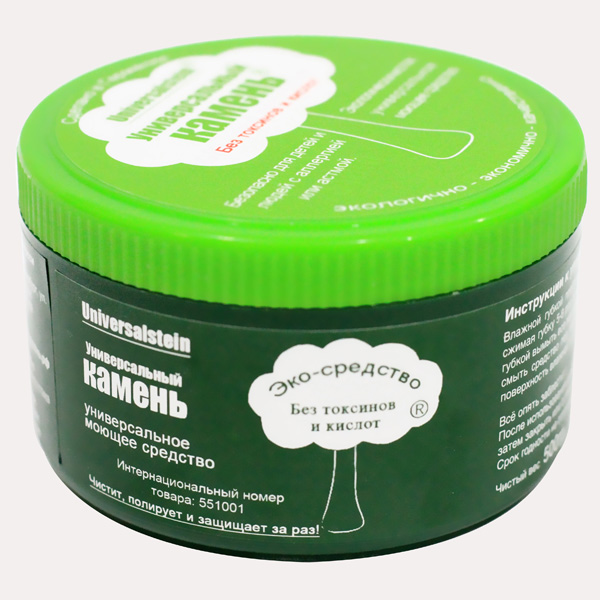
For an environmentally friendly and safe cleaning of your oven, we recommend using the Universal Stone. This unique detergent was developed in Germany to remove stubborn dirt of various origins from all surfaces.
It is a paste consisting of biocomponents: clay, flakes of coconut and green soap, glycerin. The ingredients soften and dissolve fatty deposits without leaving a trace. All that is needed for a mirror-like shine of the oven surface is to apply the product on the dirt for 10 minutes, rub it a little with a sponge and rinse off the remains.
Advantages:
-
environmental friendliness;
-
efficiency;
-
nice smell;
-
does not corrode the skin – you can work without gloves.
Disadvantage:
-
price – 3000 rubles. for 800 g of funds;
-
sold only in online stores.
Method 3. Steam cleaning

An affordable and effective way to clean the inner surfaces of the oven without harm to your health is to put a baking sheet inside with water and diluted dishwashing detergent or laundry soap.
Mode of application:
-
turn on the oven for the upper and lower heating at a temperature of 1200C;
-
pour water into a baking sheet and add 50 ml of 'Fairy' or grated laundry soap there;
-
put the baking sheet on the bottom shelf for 40-60 minutes;
-
wait until the surface of the stove has cooled down a little and wash it thoroughly with a sponge or toothbrush.
The steam softens soot and grease, after which they can be easily removed with warm water. In difficult cases, we recommend cleaning the oven with soap or dishwashing detergent.
Method 4. Soda and vinegar
An old proven way to clean the oven is to remove carbon and grease with baking soda and vinegar.
Instructions for use:
-
mix 2 tbsp. soda in ¼ glass of warm water to a paste;
-
apply a thick layer of the mixture to the side walls, bottom and door of the oven;
-
leave for 1-2 hours until completely dry;
-
pour 50 g of vinegar into a bottle with a spray nozzle (you can use an empty container from liquid for cleaning windows);
-
spray vinegar over all soda-treated surfaces;
-
wait 15 minutes;
-
rub with a sponge or toothbrush;
-
thoroughly rinse off the remains with a damp cloth.
In difficult cases, it may be necessary to repeat the procedure 2-3 times.
Advantages:
-
availability – the products used for cleaning can be found in any home;
-
efficiency.
Disadvantage:
- takes time and effort to wipe away traces of grease and carbon deposits.
Method 5. Baking dough
You can use baking powder instead of baking soda and vinegar. It contains sodium dihydrogen pyrophosphate, sodium bicarbonate and starch.
Mode of application:
-
sprinkle the contents of the bag (or several bags) on the open door and bottom of the oven;
-
from a spray bottle or using a sponge, pour some water onto the baking powder;
-
to clean the walls, you need to prepare a paste in a bowl – pour the powder from the bag and mix it with 1 tbsp. water (the consistency of thick sour cream should be obtained so that it does not drain);
-
quickly, while the reaction is going on (the mixture will bubble), apply with a sponge to the walls of the oven;
-
leave for 10-15 minutes;
-
wipe the lumped fat with a damp cloth lathered with laundry soap.
Advantages:
- availability, efficiency and safety.
We did not find any drawbacks to this method.
Method 6. Citric acid
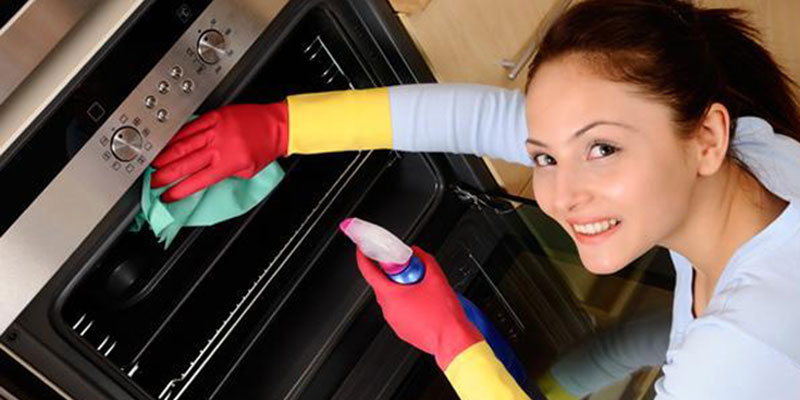
Using citric acid or lemon juice, you can get rid of carbon deposits and fresh traces of fat in the oven:
-
the powder must be diluted in water in a 1: 1 ratio;
-
moisten the contaminated surface with a sponge or spray bottle;
-
leave for 30-40 minutes;
-
rub thoroughly with a sponge;
-
wash off residues with water.
Advantages:
- safe for health, copes well with carbon deposits.
Disadvantages:
- does not remove old traces of fat.
Method 7. Ammonia
The advantage of this method is its simplicity and availability. The hostess only needs to heat the oven to 1200C, put a wide enamel pot with boiling water on the bottom shelf, and on the wire rack (unlike other methods, you don't need to clean it here) – a bowl with 2-3 bottles of ammonia. Close the door and leave for 5-6 hours, preferably overnight. In the morning, all that remains is to wash off the pollution softened by ammonia vapors with a soapy sponge, after removing the grate.
The disadvantage is an unpleasant pungent odor. It is imperative to carry out the procedure with the window open, but it is better to open the window.
To get rid of the smell of detergents from the oven, you need to boil water with dissolved activated carbon in it. Crush 5 tablets, fill them with 1 liter of water, put in an oven heated to 1100C for 30 minutes.
Method 8. Cleansing paste
For stubborn stains, you can make a homemade cleaning paste. For this you need to mix:
-
20 g of grated laundry soap;
-
1 tbsp table salt (better coarse grinding);
-
1 tbsp vinegar;
-
1 tbsp hot water.
Using a sponge or brush, rub the paste into the dirty surfaces of the oven, wait 15-20 minutes and remove with clean water.
There is another recipe for making a cleaning agent that can be used to wash off carbon and fat in the oven:
pour 100 g of warm water into a bowl:
-
dissolve 1 sachet of citric acid in water;
-
pour in 1 tsp. powder 'Pemolux' or 'Comet';
-
add 1 tsp to the mixture. dishwashing liquid.
-
Apply the resulting composition to dirty surfaces, wait 10 minutes and rub with a sponge.
Advantages:
- well remove carbon deposits and old drops of fat, are safe for health.
There are no disadvantages.
Method 9. Detergent and steam
To enhance the effect of all of the above means, you can additionally act on them with steam.
After curing the oven with baking soda, vinegar, citric acid or a cleansing paste, place a baking sheet in hot water on the bottom (you can add a little 'Fairy' or vinegar there). Close the door and turn on the oven at a temperature of 1200C.
After half an hour of boiling water, turn off the stove, open the door. Without waiting for the surfaces to completely cool down (the temperature should be comfortable for hands – 50-600C), thoroughly wash the inside with water and a sponge.
Advantages:
- when heated, greasy traces are removed much faster. The steam will keep the cleaning agents on the inside of the oven from drying out – together it works much better! The method is suitable for the most difficult cases.
Disadvantage:
- takes time (the whole process takes at least an hour, even if the surfaces are not very dirty).
Whichever procedure for cleaning the oven is carried out, you should limit access to the kitchen for children and pets at this time. Especially if the process is carried out using products with a pungent odor or heating.
Expert opinion
Removing fat in the oven will not be a problem if you make it a rule to wash it always immediately after cooking in it. You can use baking soda, vinegar, ammonia, or citric acid to remove carbon deposits.
You will have to tinker with old traces of fat – not every cleanser can remove them. Store-bought grease removers can easily handle them, but they have many disadvantages.
The safest and most effective way to clean the oven from fat and carbon deposits is baking soda and vinegar or baking powder. But without steam, it is unlikely that it will be possible to completely remove all dirt at once. Homemade cleansing pastes have worked well.



